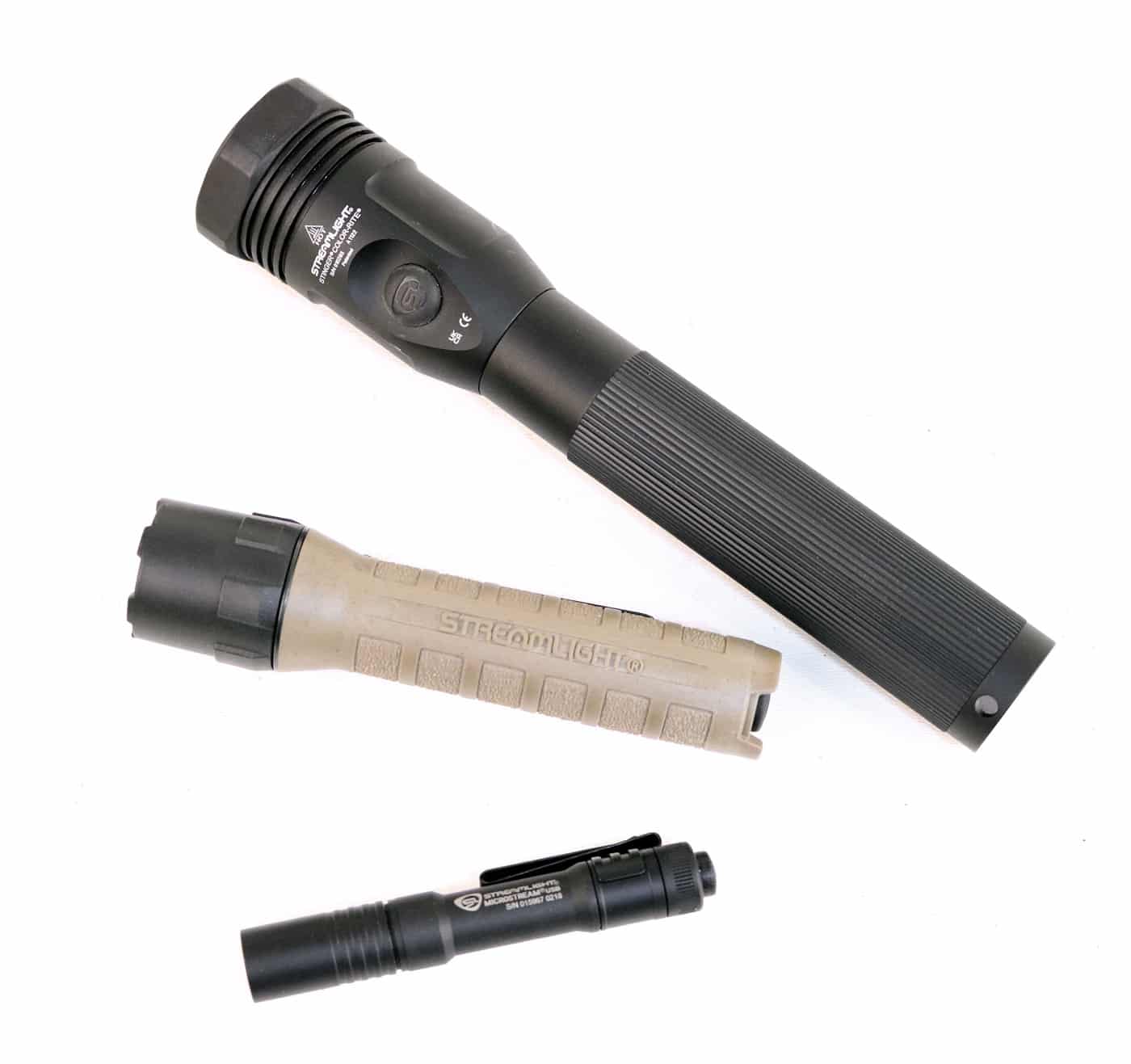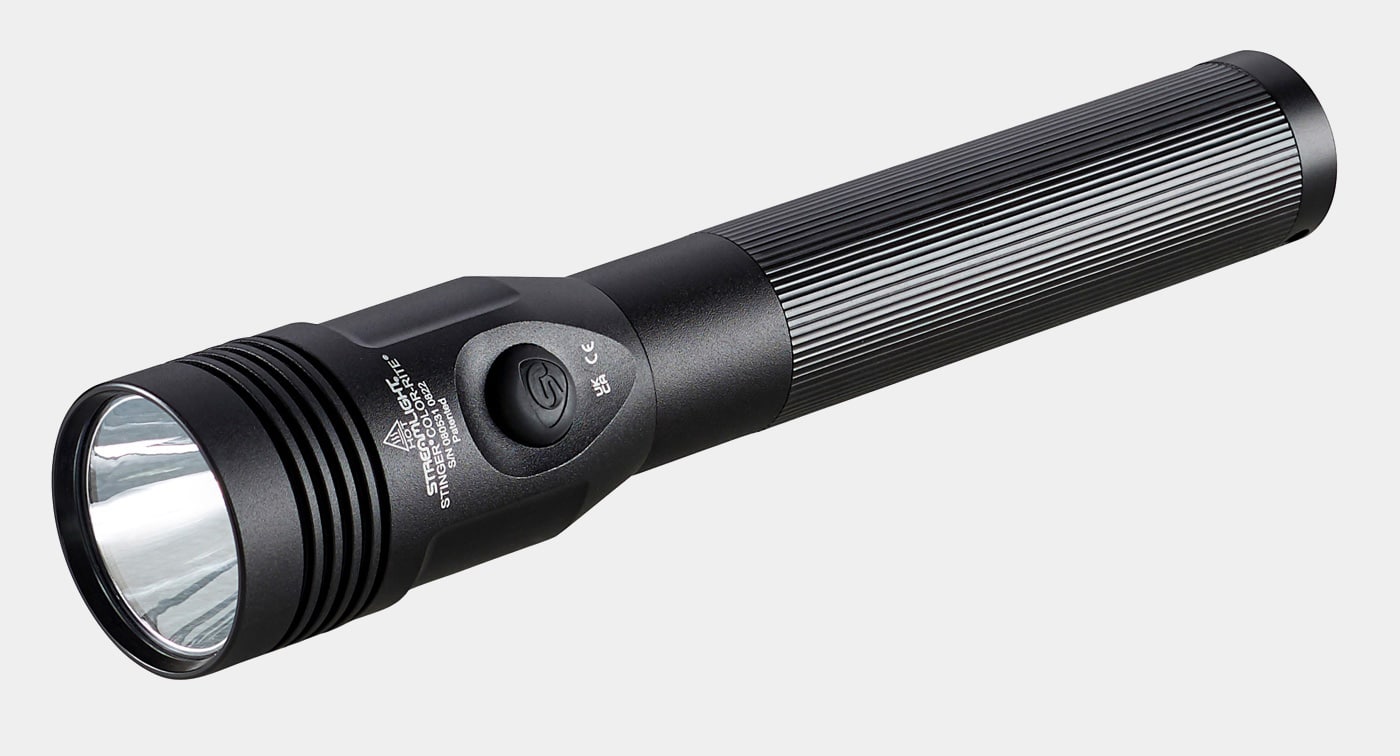Streamlight Stinger Color-Rite Review
May 29th, 2024
6 minute read
In this review, Dr. Will Dabbs evaluates the Streamlight Stinger Color-Rite flashlight for use in self-defense. This tactical flashlight potentially offers a substantial advantage over other lights. Streamlight provided this flashlight to the author for the purposes of review.
Most modern tactical lights are white — brilliant, penetrating, brain-drillingly white. The color white is the lightest color on the visible spectrum. It has no discernible hue. Snow, milk and chalk are examples of things that are just naturally white. White objects scatter all visible wavelengths of light.

White is the opposite of black. Black absorbs color, while white reflects it. However, under certain circumstances, bright white might not be the ideal solution for a hard-use flashlight.
On the outside, the Stinger Color-Rite looks like a pretty typical high-end utility flashlight. The machined aluminum body is round with a hexagonal rubber sleeve around the lens to keep it from rolling away when you set it down. There is a single thumb switch on the top. The chassis sports longitudinal grooves to enhance purchase.

The built-in nickel-metal hydride rechargeable battery charges via an included cradle. This cradle grips the light firmly and can be mounted on either a flat surface or a vertical wall. The light is smart enough to keep itself comfortably and safely topped off when left on the cradle for long periods.
Streamlight Stinger Color-Rite Performance
The Stinger Color-Rite offers three intensity modes as well as a strobe. High mode projects 500 lumens for 1.5 hours on a charge. Medium is 275 lumens for 2.5 hours. Low is 140 for five hours. Strobe mode runs for around three hours on a full charge.

A light press to the master switch offers momentary operation. A full press yields an audible click and produces constant operation at full power. Holding the switch down cycles the light through its three intensity modes. A quick double click puts the unit into strobe, and a follow-on firm click in any mode shuts it off. That sounds more complicated than it is.
[To better understand these specifications, read our article on candela vs. lumens.]
The Stinger Color-Rite light is IPX-4 water resistant and impact-tested up to a meter onto a hard surface. Expect a 50,000-hour total service life out of the LED. That will undoubtedly outlive me. The light is 8.4 inches long and weighs 12.4 ounces.

All that stuff is frankly boilerplate for a top-quality Information-Age hard-use flashlight. These tools are designed to be tucked away when they aren’t needed and then be ready to go anytime life goes sideways. What really sets the Color-Rite apart, however, is, well, its color.
[Learn more about flashlight runtimes.]
A Spot of Science
The quantification of color as it relates to illumination is referred to as its temperature. The visible spectrum for artificial light typically ranges from 1,000 to 10,000 measured in kelvins. Commercial and residential interior lighting typically hovers between 2,000 and 6,500 K. Paradoxically, low temperatures are considered warm. Higher temperatures are cooler.

To understand why color is described this way, imagine a blacksmith heating up a piece of steel. This is actually called the Planckian locus, and the details are very complicated. However, distilled to its essence, steel heated hot enough to be worked is typically a warm white with a smidge of yellow, around 3,000 K. Steel heated until it melts is bright white or silver or around 5,000-6,000 K. These same concepts can be used to understand how color is quantified in flashlights. Higher numbers equal a brighter white.
Another component of artificial lighting is its Color-Rendering Index, or CRI. This scale runs from 0 to 100. A CRI of 100 is the closest to natural sunlight. Any LED emitter with a CRI in the high 80s or above is considered to have excellent color rendering capability. The LEDs used in the Stinger Color-Rite have a CRI of 90.
A higher CRI causes an object’s texture to stand out. Industrial fluorescent lighting usually has a low CRI. Imagine what your spouse looks like by candlelight versus in the harsh white light of a doctor’s exam room as an example. Likewise, clothes bought in an antiseptic place like Walmart tend to look a bit different once you get them into the sunlight.
The Color-Rite Angle
The Stinger Color-Rite produces light at around 3,000 K. This is the equivalent of sunlight at dawn or sunset with a clear sky. What that soft color gets for you is less eye strain and greater ability to assess detail. They tell me it is also great for blood tracking, though I have not had opportunity to test that out myself.

The synergistic result is a flashlight that enhances detail under low-light conditions, allowing the operator to appreciate color as might be the case in natural light. The softer, warmer beam can help tease out subtle details that might be lost under a harsher state of illumination. It also doesn’t seem to produce nearly as much glare as is the case with purely white lights, particularly in hard dark. Truth be known, I’m red-green colorblind myself, so my perception is perhaps a bit skewed. However, the Color-Rite flashlight is still a pretty interesting experience.
Ruminations on the Stinger Color-Rite
There are lots of high-tech flashlights out there. The Stinger Color-Rite is currently running about $130 on Amazon. The thing is thoroughly hard-core and would make a decent club in a pinch. However, its real strength is that it produces a soft natural light that is easy on the eyes and better renders target colors than most conventional flashlights. That might be handy should you ever be exploring the National Portrait Gallery during a power outage, but it also makes it easier to tease out accurate details in a crime scene or during a search for something important as well. The Streamlight Stinger Color-Rite is the next best thing to a pocket full of sunlight.
Editor’s Note: Please be sure to check out The Armory Life Forum, where you can comment about our daily articles, as well as just talk guns and gear. Click the “Go To Forum Thread” link below to jump in and discuss this article and much more!
Join the Discussion
Featured in this article
Continue Reading
Did you enjoy this article?

 35
35








